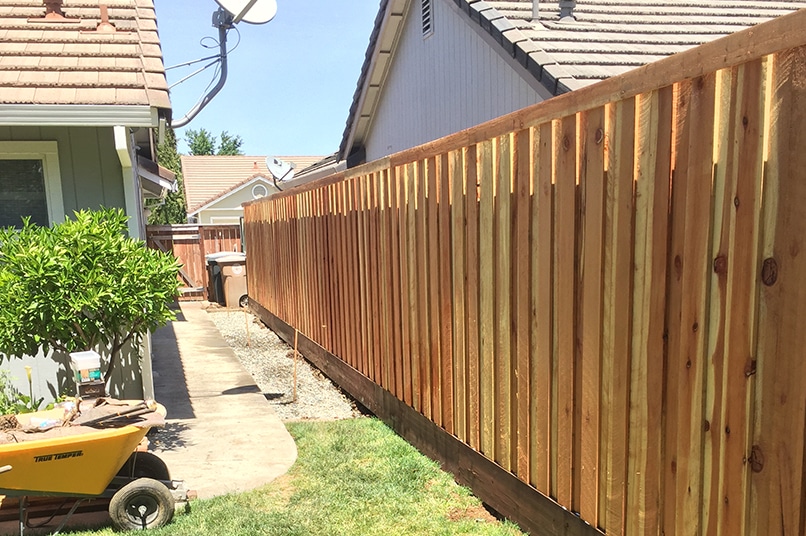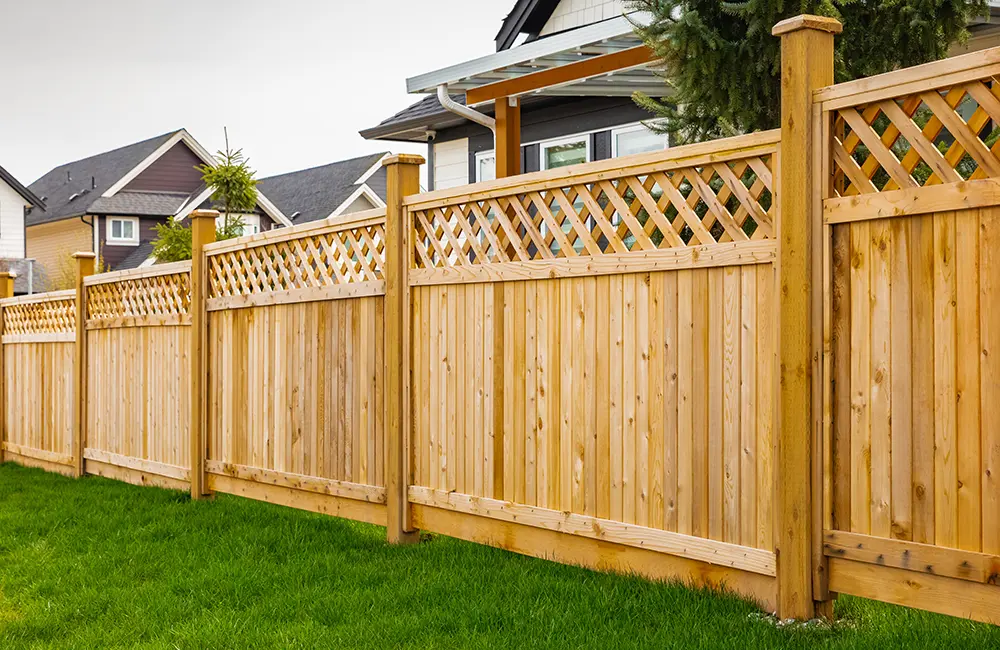Revamp Your Outdoor Living Space with a Expert Deck Builder
Wiki Article
Exactly How to Identify Usual Concerns That Need Immediate Fencing Repair Work
When it comes to maintaining your fencing, it is critical to find concerns before they become larger problems. Regularly looking for indications of decaying wood, leaning panels, or rust can conserve you time and money in the future. You may not recognize just how weather condition and bugs can jeopardize your fencing's integrity. Allow's check out the common indications that indicate your fence needs instant interest, so you can maintain your property safe and secure and looking its best.Indications of Rotting Timber in Wooden Fences
Have you discovered your wood fencing looking a bit worse for wear? It might be time to check for indications of decomposing timber if so. Initially, examine the base of the articles and panels for soft places. That's a clear sign of rot if you push on the timber and it feels spongy or falls apart. Next, seek staining or dark spots on the timber-- these typically signal dampness damage. Pay interest to any kind of peeling paint or surface, as this can reveal the timber to further decay. Furthermore, a poignant, mildewy smell can indicate fungal development. Don't forget to evaluate connections and joints; if they hang or breaking down, the wood under is most likely compromised. By capturing these signs early, you can stop a lot more comprehensive damages and maintain your fence standing strong. Routine maintenance is crucial to extending the life of your wood fencing.Leaning or Tilting Fencing Panels
If you've observed your fence panels leaning or tilting, it's vital to comprehend what triggered it. This problem might show underlying architectural damage that requires your attention. Allow's discover the typical causes and the repair service options available to obtain your fence back in shape.
Root Causes Of Leaning Panels
When you discover your fencing panels leaning or turning, it's typically an indicator of underlying issues that need dealing with. One common reason is insufficient drainage; too much water can deteriorate the dirt around the fencing posts, compromising their assistance. One more culprit can be strong winds or storms that press versus the panels, especially if they're not correctly anchored. In addition, the natural settling of soil in time can cause blog posts to change, bring about a tilt. Pests, like termites, can jeopardize the integrity of wooden panels, triggering them to lean. Bad setup techniques may result in panels not being securely set, leaving them prone to leaning under stress. Address these issues promptly to preserve your fence's integrity.
Indicators of Architectural Damage
Discovering leaning or tilting fence panels can be alarming, as these problems commonly suggest structural damages that requires prompt attention. When your fencing starts to lean, it may signify that the posts are changing or that the soil around them has eroded. Pay close focus to voids between posts or panels, as these can likewise recommend instability. deck builder. Additionally, look for fractures or splintering in the wood, which can damage the total structure. It could compromise the honesty of the fence if you discover rust or corrosion on metal components. Keep in mind, disregarding these indications can bring about a lot more extreme damages down the line, so it's necessary to evaluate the circumstance promptly and take action before it worsensRepair Work Options Available

Rust and Deterioration in Steel Fences
If you possess a metal fencing, you may see corrosion and deterioration sneaking in in time, specifically if it's exposed to dampness. These problems not only influence the look of your fence however can additionally endanger its architectural integrity. To determine corrosion, search for reddish-brown spots or spots, which show the steel is oxidizing. Rust can spread out quickly if left untreated, weakening the fencing and leading to pricey repairs.To take on rust and corrosion, you must cleanse the affected locations with a cord brush and use a rust-inhibiting primer. As soon as the guide dries, think about repainting the fencing with a weather-resistant paint to shield it even more. Regular maintenance, such as evaluating for indicators of rust and touching up paint as needed, will help extend your fencing's life-span. Dealing with these problems quickly ensures your metal fencing remains solid and aesthetically appealing for many years ahead.Cracks and Divides in Vinyl Fencing

Root Causes Of Vinyl Damage
Vinyl secure fencing is popular for its longevity, yet it can still struggle with splits and divides as a result of different variables. One major reason is severe temperature variations. When plastic broadens in the warmth and contracts in the cool, it can damage the product over time. Additionally, direct exposure to severe sunlight can bring about UV destruction, making the plastic brittle. Physical impacts, like heavy branches or accidental accidents, can also produce cracks. Poor installment or utilizing low-quality products can exacerbate these concerns. Additionally, age contributes; older plastic fence is extra susceptible to damage. Regular evaluations can aid you recognize these factors prior to they cause significant problems. Take proactive procedures to guarantee your fencing continues to be strong and intact.Fixing Cracks Properly
Although cracks and splits in your vinyl fencing can be concerning, resolving them immediately can stop more damages and preserve the fencing's look. Examine the dimension of the crack. For little splits, a plastic repair work set often consists of adhesive that can bond the edges, giving a smooth fix. Tidy the area thoroughly before applying the glue, guaranteeing it sticks properly. For bigger divides, you could need to utilize a plastic spot. Cut the spot to dimension, use glue around the edges, and press it securely onto the split. Enable it to treat according to the supplier's instructions. Routine upkeep and fast repairs can extend your fence's life expectancy, maintaining it looking excellent for many years to come.Loose or Missing Out On Fence Articles
Loose or absent fence posts can threaten the security of your entire fencing structure. If you observe any type of blog posts leaning or tottering, it's important to attend to the problem immediately. Inspect for any type of indications of motion, as this can lead to more damages with time. You can easily examine the problem by providing each blog post a mild shake-- if it feels unstable, it's time to take action.For missing out on blog posts, you'll need to replace them as soon as possible to preserve your fencing's stability. Make sure they're securely secured in the ground with concrete or crushed rock for added stability when you set up brand-new articles. If an article is loose, tighten it by including added assistance or driving it deeper into the ground.Ignoring these problems can result in larger problems, like gaps in your fence or perhaps full collapse. So, keep an eye on your posts and stay proactive regarding fixings!Damages From Weather and Natural Environment
Weather and natural elements can damage your fencing, causing numerous kinds of damage that require timely attention. Hefty rainfall can trigger wood to rot, making it unstable and weak. Snow buildup might bend or break panels, while solid winds can root out fence messages or cause areas to lean.If you notice cracks or splintering in wooden fencings, it's a sign of drying out due to extreme sunlight direct exposure. Meanwhile, metal fencings can corrosion if safety coatings diminish, specifically in damp or coastal areas.Inspect your fencing on a regular basis after tornados or severe climate to catch any kind of damage early. Resolving these issues promptly can conserve you from costly fixings down the line. Do not wait until a tiny issue transforms into a significant one; remain aggressive and keep your fence top shape to keep both capability and curb allure.Pest Invasion and Termite Damages
It's crucial to act promptly to avoid additional destruction when you see indicators of bug invasion or termite damages. Look for mud tubes along your fence or hollow-sounding wood, as these suggest termites are at job. You might also see little holes or frass, which is termite droppings appearing like sawdust. If you spot any of these indications, it's time to analyze the damage.Don' t wait until it's too late; bugs can here compromise your fence's integrity. Examine the surrounding location for beetles or ants, as they might be adding to the problem. If you presume a problem, consider getting in touch with a bug control professional to deal with the issue.repairing and validate or replacing damaged areas of your fence promptly not just restores its strength however also protects against bugs from spreading further. Remain attentive to keep your home protected and pest-free.Regularly Asked Concerns
Just how Typically Should I Evaluate My Fence for Damage?
You ought to check your fence at the very least twice a year, preferably during spring and loss. Normal checks help you spot damage early, saving you time and cash on repairs while preserving your property's look and safety and security.Can I Fix a Fence Myself or Hire a Professional?
If you have the right tools and skills, you can most definitely repair a fencing yourself. Nonetheless, employing an expert assurances top quality job and conserves you time, specifically for intricate fixings or substantial damages.What Devices Are Needed for Basic Fence Fixings?
For basic fencing repairs, you'll require tools like a hammer, screwdriver, pliers, a saw, a level, and measuring tape. deck builder. Relying on the repair, you could additionally need nails, screws, or substitute boardsExactly How Much Does Fence Repair Work Generally Cost?
Fencing repair costs differ commonly, yet you can anticipate to pay in between $200 and $1,500 depending upon materials, labor, and level of damages. It's wise to obtain numerous quotes for the best deal.
When Is the very best Season for Fencing Repair Works?
The very best time for fence repairs is throughout moderate climate, commonly in spring or early fall. You'll avoid severe temperatures, making it simpler to work and ensuring the materials set correctly for lasting durability (deck builder). Seeing leaning or tilting fencing panels can be alarming, as these problems usually show architectural damages that needs instant focus. Loose or absent fencing articles can undermine the stability of your whole fencing structure. Snow build-up may bend or break panels, while strong winds can root out fence articles or cause sections to lean.If you discover splits or splintering in wooden fences, it's an indicator of drying out due to extreme sun exposure. Metal fencings can rust if protective coatings use off, specifically in humid or seaside areas.Inspect your fence regularly after tornados or extreme weather to catch any kind of damage early. Fencing repair costs differ extensively, yet you can expect to pay in between $200 and $1,500 depending on products, labor, and level of damageReport this wiki page